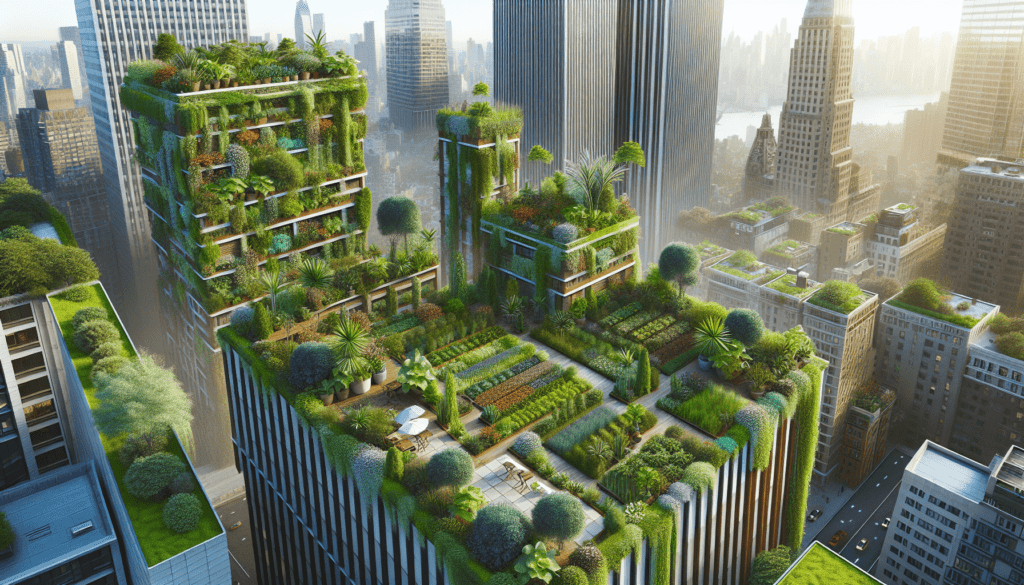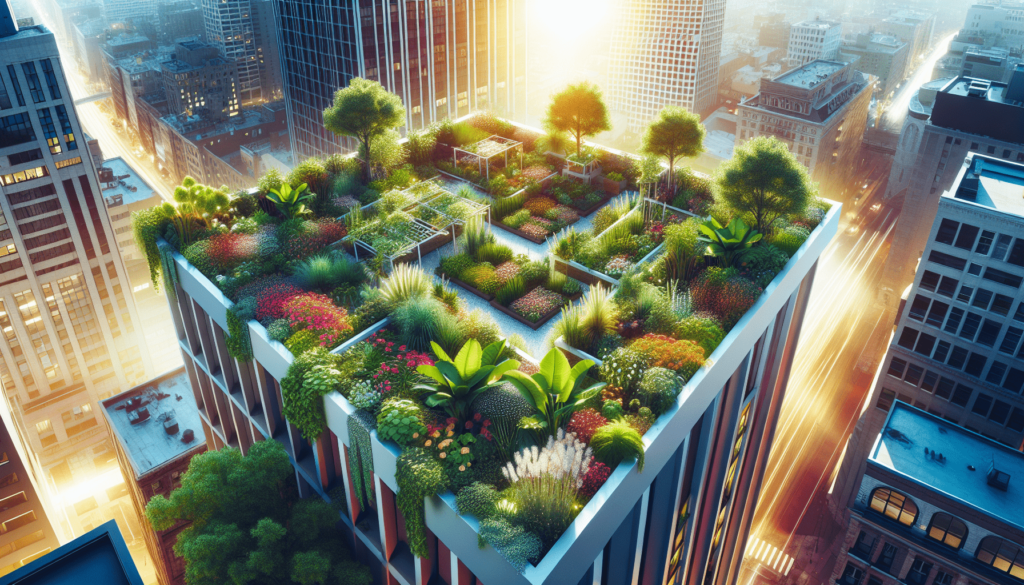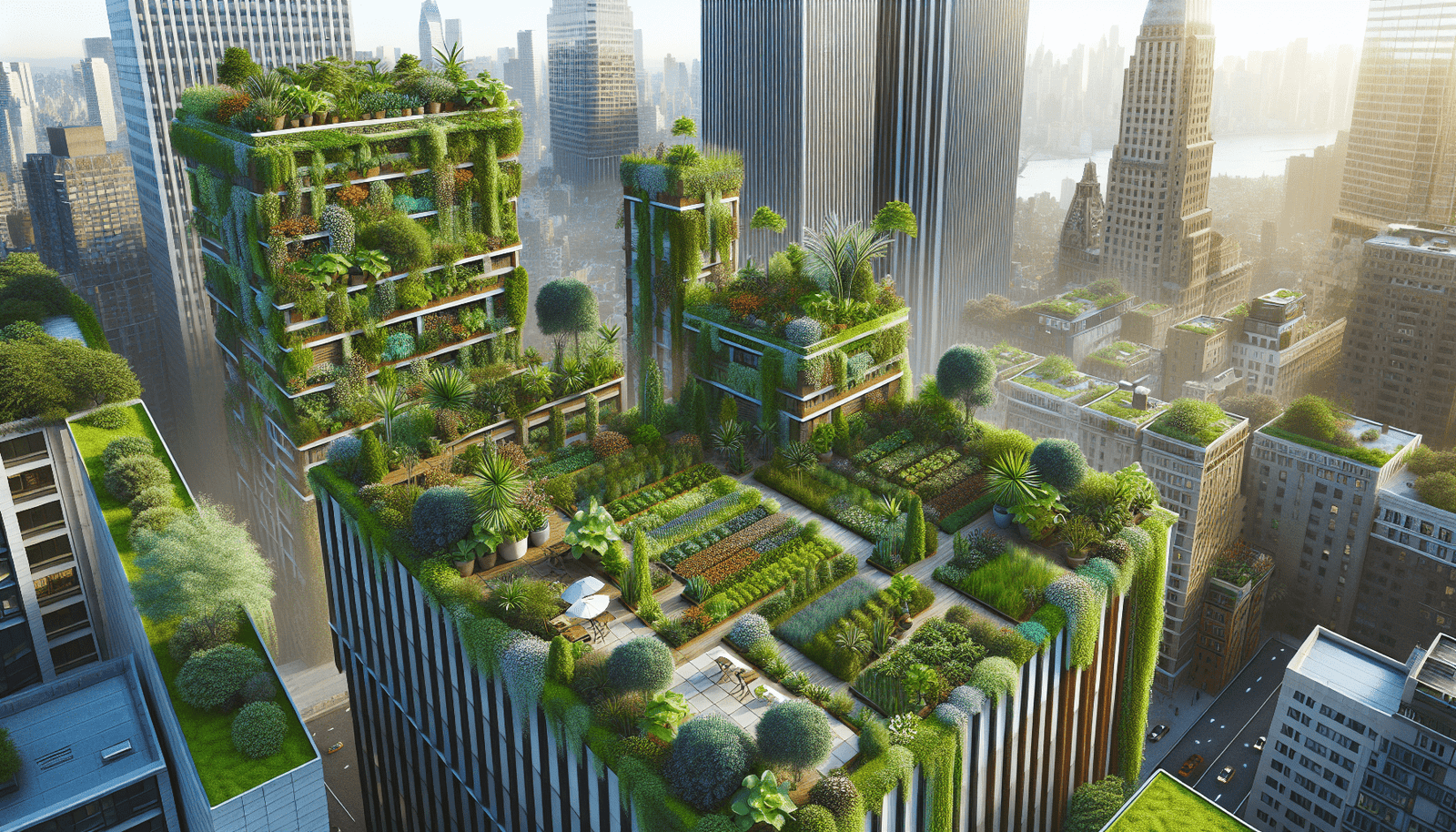Welcome to the wonderful world of rooftop gardening! In this article, you will learn about the joys of cultivating your own green oasis high above the city streets, as well as the challenges you may face along the way. From breathtaking views to limited space constraints, rooftop gardening offers a unique and rewarding experience for those willing to put in the effort. So grab your gardening gloves and get ready to transform your rooftop into a beautiful and sustainable garden paradise! Have you ever considered starting a rooftop garden? Whether you live in a bustling city or a suburban area, rooftop gardening can be a great way to connect with nature and grow your own fruits, vegetables, and herbs. In this article, we will explore the joys and challenges of rooftop gardening, and provide you with tips and tricks to help you get started on your rooftop gardening journey.
Getting Started with Rooftop Gardening
Rooftop gardening can be a rewarding and fulfilling hobby, but it requires some planning and preparation. Before you start planting, you’ll need to consider a few key factors such as sunlight, space, and access to water.
Assessing Your Rooftop Space
The first step in starting a rooftop garden is to assess your rooftop space. Take a look at your rooftop and determine how much sunlight it receives throughout the day. Most plants require at least 6-8 hours of sunlight to thrive, so make sure your rooftop gets an adequate amount of sunlight. Additionally, consider the size and layout of your rooftop – do you have enough space to accommodate the plants you want to grow?
When assessing your rooftop space, also consider access to water. Rooftop gardens require regular watering, so make sure you have a convenient water source nearby. If you don’t have access to a water source on your rooftop, you may need to carry water up from a lower level or invest in a drip irrigation system.
Choosing the Right Plants for Your Rooftop Garden
Once you’ve assessed your rooftop space, it’s time to choose the right plants for your rooftop garden. When selecting plants, consider the climate in your area, the amount of sunlight your rooftop receives, and the space available for planting. Some popular rooftop garden plants include tomatoes, peppers, herbs, and leafy greens.
When choosing plants for your rooftop garden, also consider how much maintenance they require. If you’re new to gardening or don’t have a lot of time to devote to plant care, opt for low-maintenance plants that are easy to grow.
Designing Your Rooftop Garden
Designing your rooftop garden is an important step in creating a functional and visually appealing space. Consider factors such as layout, container choice, and drainage when designing your rooftop garden.
Layout and Organization
The layout of your rooftop garden will depend on the size and shape of your rooftop, as well as the plants you want to grow. Consider creating designated areas for different types of plants, such as a vegetable garden, herb garden, and flower garden.
When organizing your rooftop garden, make sure to leave enough space between plants for air circulation and easy access for maintenance tasks. You may also want to create pathways or seating areas to make your rooftop garden a comfortable and inviting space.
Container Choice
In rooftop gardening, containers are essential for growing plants. When choosing containers for your rooftop garden, consider factors such as size, material, and drainage. Opt for lightweight containers that are easy to move, especially if you have a small rooftop or limited access.
Choose containers that have adequate drainage holes to prevent water from pooling and causing root rot. Additionally, consider the aesthetic appeal of your containers – you can choose from a variety of materials such as plastic, terracotta, or metal to suit your rooftop garden design.
Drainage Considerations
Proper drainage is essential in rooftop gardening to prevent water from damaging your rooftop and plants. Make sure your containers have drainage holes at the bottom to allow excess water to drain out. You can also add a layer of gravel or stones at the bottom of your containers to improve drainage.
To ensure proper drainage, consider elevating your containers slightly off the rooftop surface using pot feet or risers. This will prevent water from pooling underneath the containers and help air circulate around the roots of your plants.

Maintaining Your Rooftop Garden
Once your rooftop garden is up and running, it’s important to maintain it regularly to ensure healthy and thriving plants. Routine maintenance tasks include watering, fertilizing, pruning, and pest control.
Watering
One of the most important aspects of rooftop gardening is regular watering. Rooftop gardens tend to dry out faster than traditional gardens due to exposure to wind and sunlight. Check the moisture level of your soil daily and water your plants as needed, making sure to water the base of the plants to avoid wetting the leaves.
To make watering easier and more efficient, consider installing a drip irrigation system in your rooftop garden. A drip irrigation system delivers water directly to the roots of your plants, saving time and water while ensuring proper hydration.
Fertilizing
Fertilizing your rooftop garden is essential to provide the necessary nutrients for plant growth. Choose a balanced organic fertilizer and apply it regularly according to the instructions on the package. Avoid over-fertilizing, as this can lead to nutrient imbalances and damage your plants.
Consider using compost as a natural and nutrient-rich fertilizer for your rooftop garden. Compost provides beneficial microorganisms and organic matter that improve soil health and promote plant growth. You can make your own compost or purchase it from a local garden center.
Pruning and Harvesting
Regular pruning is necessary to keep your rooftop garden plants healthy and productive. Remove dead or damaged leaves, branches, and flowers to encourage new growth and prevent disease. Pruning also helps control the size and shape of your plants, making them more aesthetically pleasing.
Harvesting your rooftop garden produce is one of the most rewarding aspects of rooftop gardening. Harvest your fruits, vegetables, and herbs when they are ripe and ready to eat, taking care not to damage the plants or surrounding foliage. Enjoy the fresh flavors of your rooftop-grown produce in salads, soups, and other dishes.
Pest Control
Pests can be a challenge in rooftop gardening, but there are natural and eco-friendly ways to control them. Inspect your plants regularly for signs of pests such as holes in leaves, sticky residue, or webbing.
To deter pests, consider planting pest-repellent plants such as marigolds, chrysanthemums, or garlic near your susceptible plants. You can also make your own insecticidal soap or neem oil spray to control common pests like aphids, spider mites, and whiteflies.
Benefits of Rooftop Gardening
Rooftop gardening offers a host of benefits to both you and the environment. From access to fresh produce to reduced energy costs, rooftop gardening can improve your quality of life and contribute to a more sustainable future.
Access to Fresh Produce
One of the primary benefits of rooftop gardening is access to fresh, homegrown produce. By growing your own fruits, vegetables, and herbs, you can enjoy the taste of freshly harvested food and reduce your reliance on store-bought produce.
Rooftop gardens also allow you to grow specialty or heirloom varieties of plants that may not be available at your local grocery store. Experiment with different plant varieties and enjoy unique flavors and textures in your cooking.
Environmental Impact
Rooftop gardening has a positive environmental impact by reducing carbon emissions and promoting biodiversity. Plants in rooftop gardens absorb carbon dioxide and release oxygen, helping to mitigate climate change and improve air quality.
Additionally, rooftop gardens can reduce the heat island effect in urban areas by providing shade, insulating buildings, and decreasing energy consumption. Green roofs also capture rainwater and reduce stormwater runoff, preventing water pollution and flooding in cities.
Health and Wellness
Gardening has been shown to have numerous health benefits, such as reducing stress, improving mood, and increasing physical activity. Rooftop gardening allows you to connect with nature, get fresh air and sunlight, and engage in a rewarding and fulfilling hobby.
Harvesting and eating fresh produce from your rooftop garden can also improve your nutritional intake and overall well-being. Enjoy the taste and nutrients of homegrown fruits and vegetables, and share the bounty with friends, family, and neighbors.

Challenges of Rooftop Gardening
While rooftop gardening has many benefits, it also comes with its fair share of challenges. From extreme weather conditions to limited space and weight restrictions, rooftop gardening requires careful planning and maintenance to be successful.
Extreme Weather Conditions
Rooftop gardens are exposed to the elements and may face challenges such as high winds, extreme temperatures, and heavy rainfall. Plants in rooftop gardens can dry out quickly in hot weather or be damaged by strong winds and storms.
To protect your rooftop garden from extreme weather conditions, consider installing windbreaks, shading structures, or protective covers. You can also choose resilient plant varieties that are tolerant of heat, drought, and other environmental stresses.
Limited Space and Weight Restrictions
One of the biggest challenges of rooftop gardening is limited space and weight restrictions. Rooftops are not designed to support heavy loads, so you need to be mindful of the weight of your containers, soil, and plants.
To reduce weight and maximize space in your rooftop garden, use lightweight containers and potting mixes, such as perlite, vermiculite, or coconut coir. Avoid overplanting or overcrowding your rooftop garden, as this can strain the structural integrity of your rooftop.
Maintenance and Accessibility
Maintaining a rooftop garden can be challenging due to accessibility issues and the physical demands of gardening at heights. Carrying water, soil, plants, and tools up and down stairs or elevators can be tiring and time-consuming.
To make maintenance tasks easier, consider installing a small shed or storage area on your rooftop to store gardening tools and supplies. You can also create a seating area or workstation where you can relax and enjoy your rooftop garden while tending to your plants.
Conclusion
In conclusion, rooftop gardening can be a rewarding and enjoyable experience, offering numerous benefits to both you and the environment. By following the tips and tricks outlined in this article, you can create a successful rooftop garden and enjoy fresh produce, beautiful flowers, and a connection to nature right on your rooftop.
Whether you’re a beginner or experienced gardener, rooftop gardening is a great way to explore your creativity, improve your well-being, and contribute to a more sustainable future. So grab your gardening gloves and get started on your rooftop gardening journey today!

